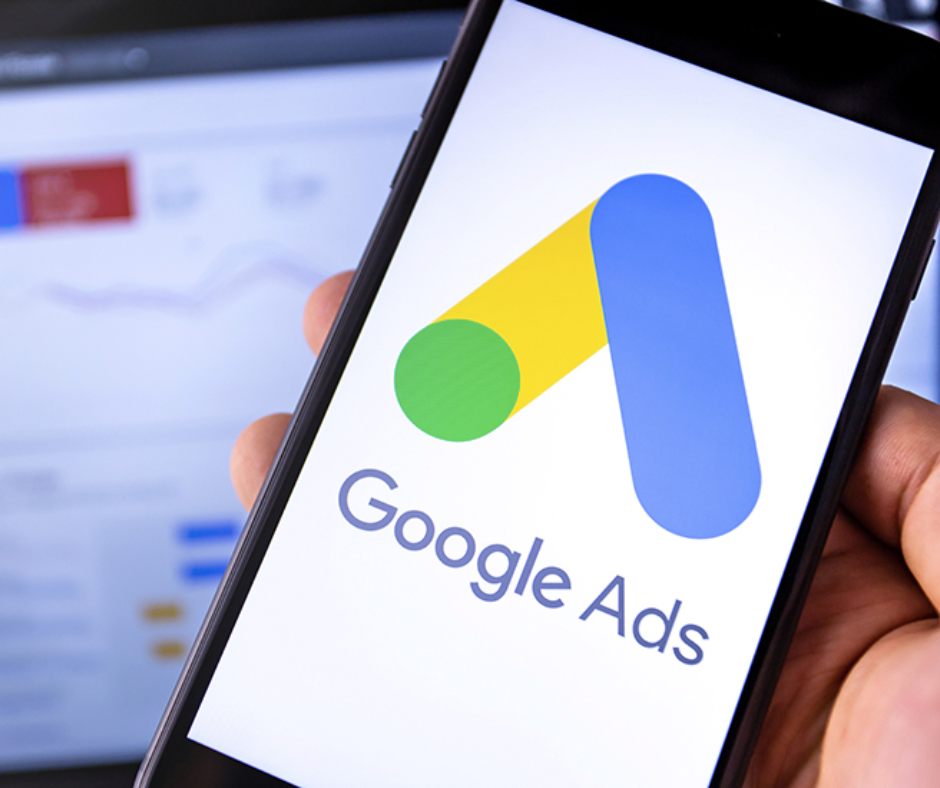In today’s digital landscape, Google Ads have become an essential tool for businesses looking to connect with their target audience. With its wide range of ad types, it can be overwhelming to choose the right campaign type that aligns with your business goals. So we’re here to help you explore the various ad types available in Google Ads and guide you in selecting the most suitable ad type for your campaign objectives.
Understanding the Different Ad Types
Google Ads offers a diverse range of ad types, let’s take a closer look at each type.
Search Ads
Search Ads are a popular choice for businesses looking to increase brand visibility and drive customer actions. These ads appear within the Google search results, providing opportunity to target potential customers who likely already have some level of purchase intent or interest in your product or service.
Display Ads
Google Display Ads have a wide reach, appearing across a network of over two million sites and apps, reaching 90% of internet users. These ads are matched to content related to your business or your customers’ interests. Display campaigns are an excellent choice for increasing brand exposure and reaching audiences with specific interests across the web.
Video Ads
Video Ads allow you to capture your audience’s attention and engage them on a deeper level. You can show your ads on their own or within other streaming video content on YouTube and Google’s network of websites and apps. With video campaigns, you can bring your business’s story to life and engage customers in different ways, such as showing ads before their favourite music video, or while they’re researching an upcoming purchase.
Shopping Ads
Shopping Ads are specifically designed for promoting products and appear on Google Shopping, next to search results, and near text and responsive ads. These ads provide consumers with detailed information about your products before they even select your ad. If you have an online or local inventory and want to boost traffic to your website or store, a Shopping campaign is an ideal choice.
App Ads
App campaigns are perfect for promoting mobile apps. With a simple setup process, these ads run across Google’s largest properties, including Search, Play, YouTube, and thousands of mobile sites and apps. Your ads and bids are automatically adjusted to get the most downloads. App campaigns help you increase engagement, app installs, and even in-app actions like signing up for a newsletter or ordering a product.
Specialised Campaign Types
In addition to the primary ad types mentioned above, Google Ads offers specialised campaign types tailored to specific business objectives.
Understanding Campaign Set Up Options
Local Campaigns
Local campaigns are designed to drive offline metrics such as store visits or in-store sales. These campaigns leverage multiple platforms like Search, Maps, Display, and YouTube to maximise your offline performance. By allowing Google Ads to optimise how your ads appear on different platforms, you can effectively reach local customers.
Hotel Campaigns
If you’re in the hotel industry and want to advertise rates and availability, Hotel Ads are the perfect choice. These campaigns display hotel prices and availability on Search, Maps, and Assistant, connecting you with millions of travellers actively searching for accommodations.
Demand Gen Campaigns
With Demand Gen campaigns (formally ‘Discovery’ campaigns), you can easily engage customers across Google’s most popular platforms, including YouTube, Gmail, and Google’s Discover Feed. These campaigns utilise a variety of rich and unique ad formats to capture your audience’s attention and drive desired actions.
Smart Campaigns
Smart campaigns leverage machine learning to deliver results across Google’s Search, Display, and Maps networks. These campaigns are ideal for advertisers new to Google Ads who want an easy way to reach relevant customers and drive results, even with limited time or experience in managing campaigns.
Key Factors to Consider
Business Goals
Your business goals should be the driving force behind your choice of ad campaign type. Are you looking to increase brand awareness, drive website traffic, generate leads, or boost app installs? Understanding your objectives will help you select the most appropriate campaign type that aligns with your goals.
Target Audience
Consider your target audience and the platforms they frequent online. Are they more likely to be searching for information on Google, watching videos on YouTube, or browsing websites within the Google Display Network? By understanding your audience’s habits and preferences, you can choose a campaign type that effectively reaches and engages them.
Ad Format
Different ad types offer various formats, each suited to different goals and industries. For example, if you have visually appealing products, Shopping ads can showcase them effectively. On the other hand, if you want to tell a compelling story, video ads provide a dynamic and engaging platform. Consider the strengths of each ad format and choose the one that best highlights your offerings.
Budget and Cost
Your budget is another crucial factor to consider. Some ad types may have higher costs per click or impression than others. It’s essential to evaluate the cost-effectiveness of each campaign type and determine which aligns with your budget while delivering the desired results.
Keyword Research
Keyword research plays a vital role in selecting the right ad campaign type. Understanding the keywords your target audience uses to search for products or services similar to yours can help you optimise your ad campaigns. Use tools like Google Search Console and Google Keyword Planner to identify high-volume keywords with manageable competition.
Landing Pages
Landing pages on your website are crucial for driving conversions and maximising the effectiveness of your ad campaigns. Create landing pages that are relevant to your ads (using matching keywords), with clear call-to-action buttons and engaging content. A well-designed landing page can significantly impact your campaign’s relevance score and overall performance.
Audience Targeting
Google Ads provides various audience targeting options, allowing you to reach specific groups of people. In-market audiences, customer list audiences, affinity audiences, and remarketing audiences are just a few examples. Consider your target audience’s characteristics and behaviours and choose a campaign type that allows you to effectively target and engage them.
Tips for Optimising Your Google Ad Campaigns
- Conduct thorough keyword research to identify relevant and high-performing keywords for your campaigns. Use Keyword Planner to find search volumes and competition levels.
- Consider using long-tail keywords to target specific niche audiences. These keywords often have lower competition and can offer a better return on investment.
- Optimise your landing pages to align with your chosen keywords. Including the keyword in the title, URL, and ad copy can improve your quality score and increase your ad’s visibility.
- Utilise negative keywords to refine your targeting and prevent your ads from showing up for irrelevant search queries. Exclude words or phrases that are not relevant to your products or services.
- Create compelling ad copy that grabs attention and entices users to click. Use actionable language, highlight unique selling points, and include strong calls-to-action. When running a Search campaign, capitalising each word in the ad headings is considered best practise. This is not suggested for Display campaigns.
- Continuously monitor and analyse your campaign performance. Identify areas of improvement and make data-driven decisions to optimise your campaigns for better results.
- Regularly test different ad formats, creatives, and targeting options to find the winning combination that resonates with your audience and drives the highest conversion rates.
Ready to Launch Your Perfect Google Ad Campaign?
Choosing the right Google Ad campaign type doesn’t have to be a daunting task. With a clear understanding of your business objectives and the unique features of each campaign type, you can make informed decisions that steer your business towards success.
If you’re feeling a bit overwhelmed with the plethora of options, why not reach out to a team of experts who can guide you in crafting a campaign that not only resonates with your target audience, but also aligns perfectly with your business goals? Our team is adept at creating Google Ad campaigns that are tailored to meet your specific needs, ensuring that you get the best return on your investment.
Get in touch with us today to start building a Google Ad campaign that works for you. Let’s turn those business goals into tangible results, one well-placed ad at a time.







